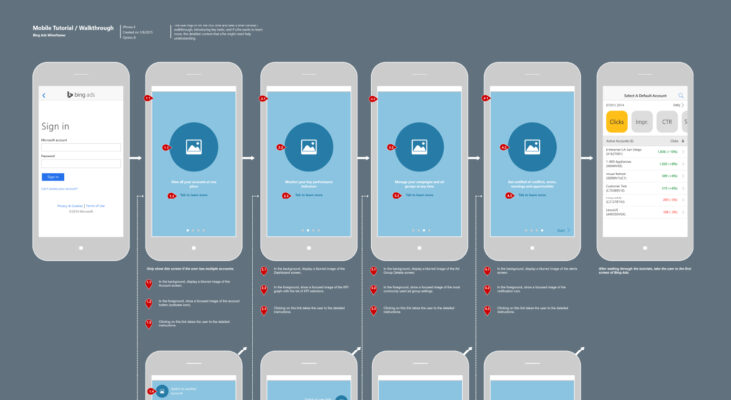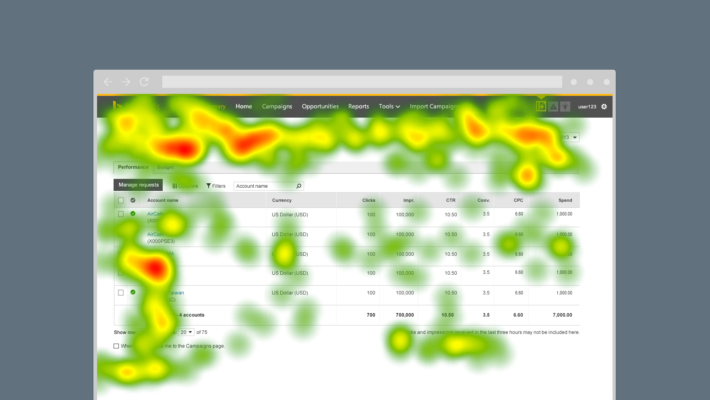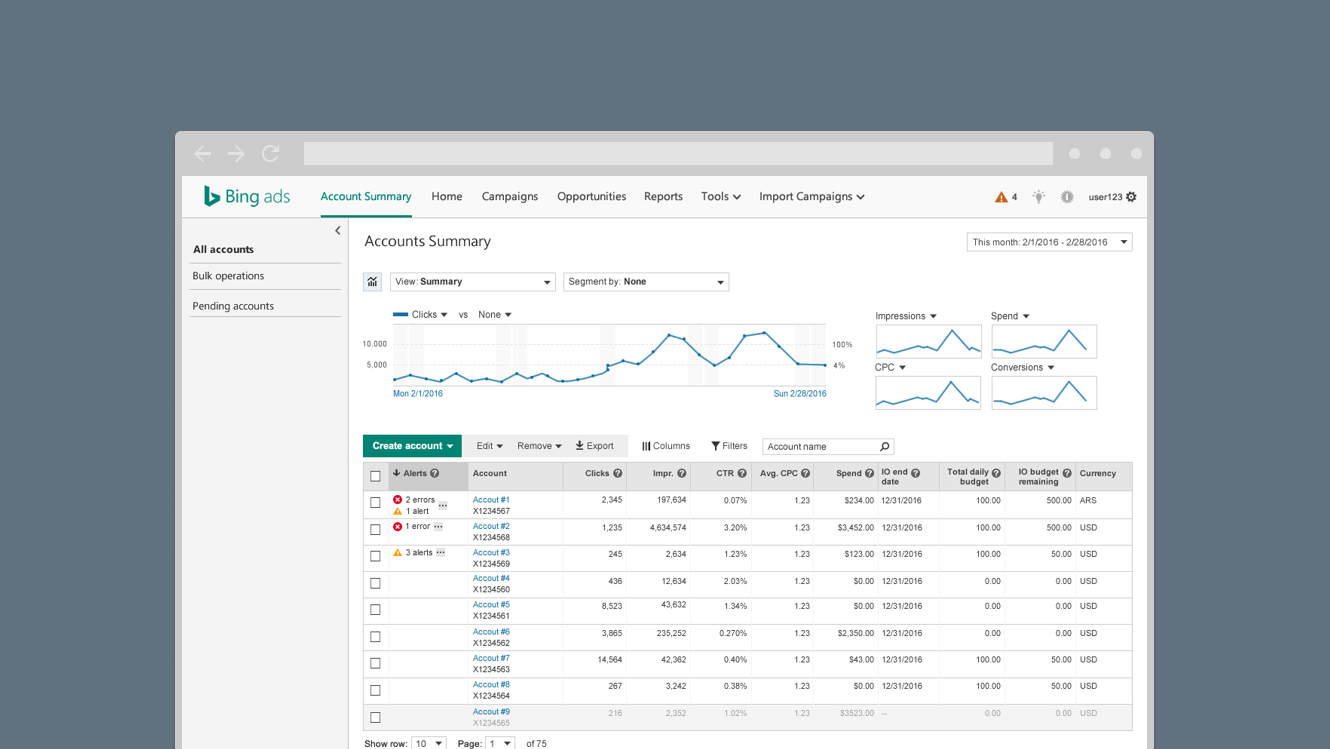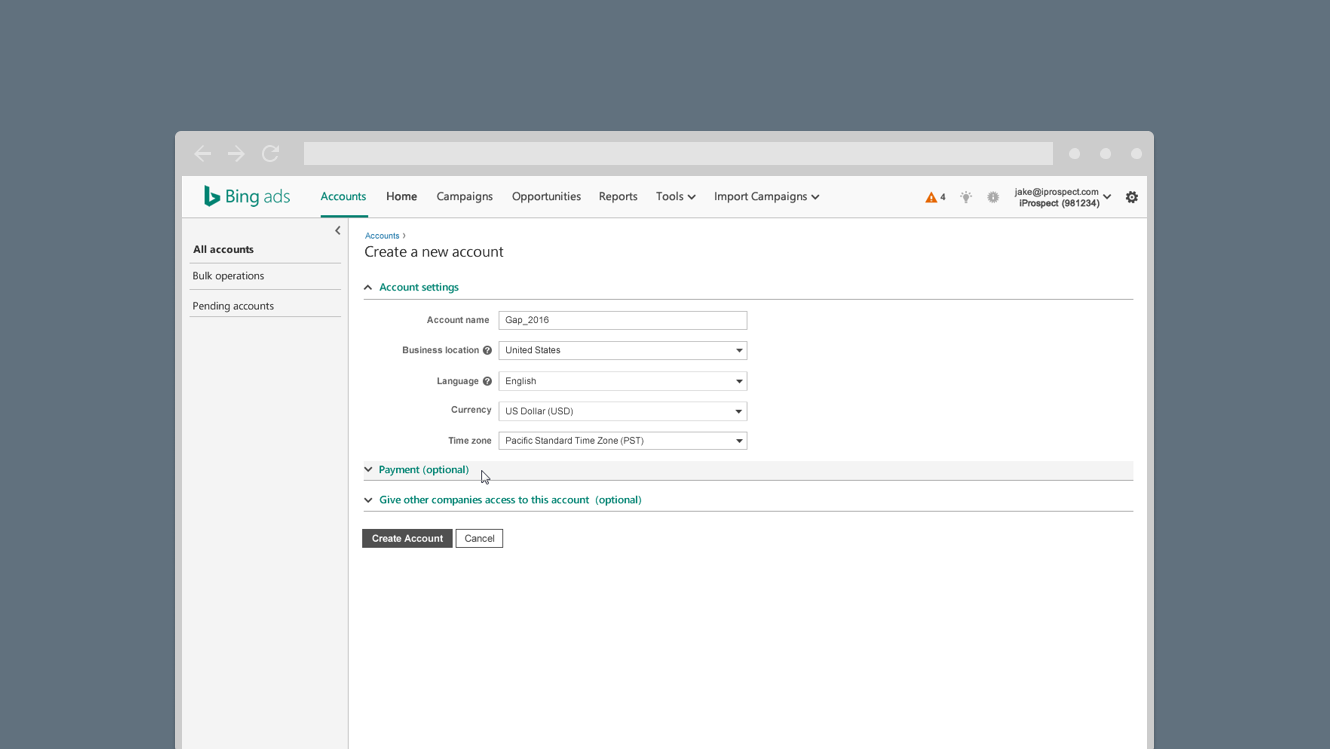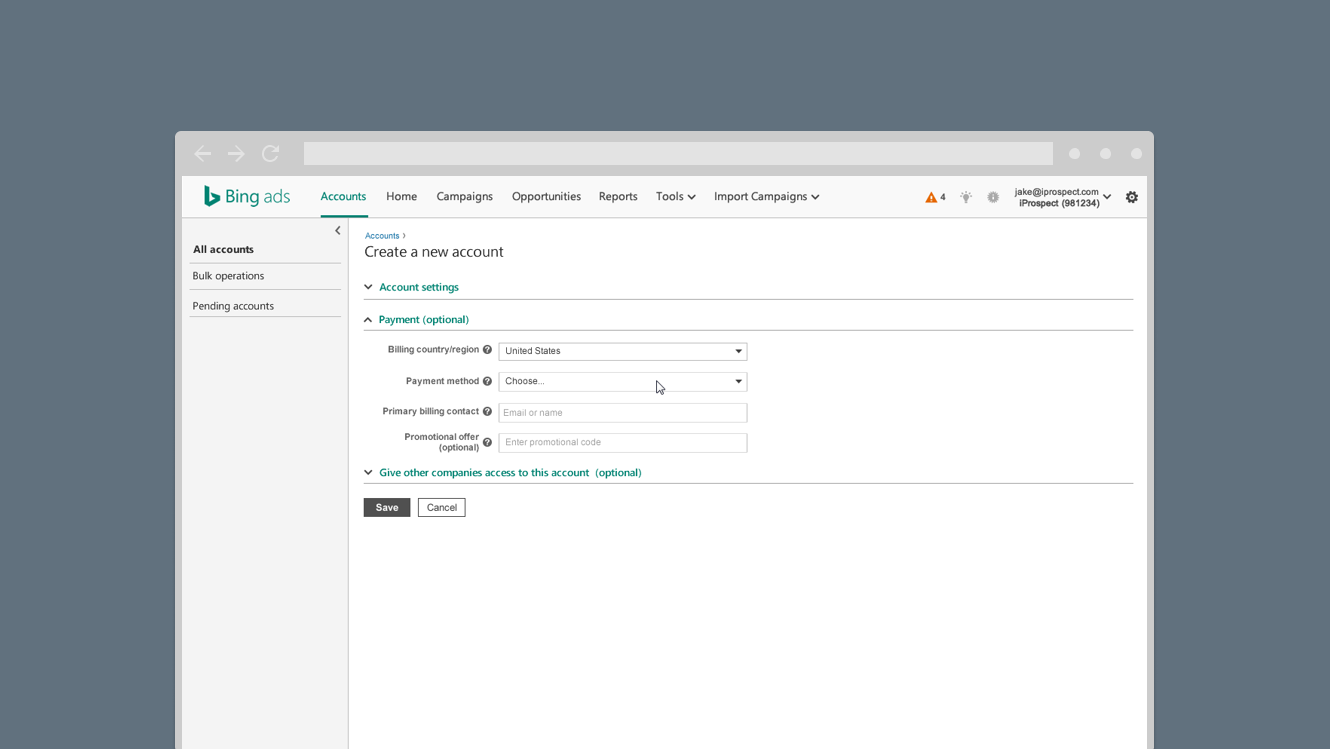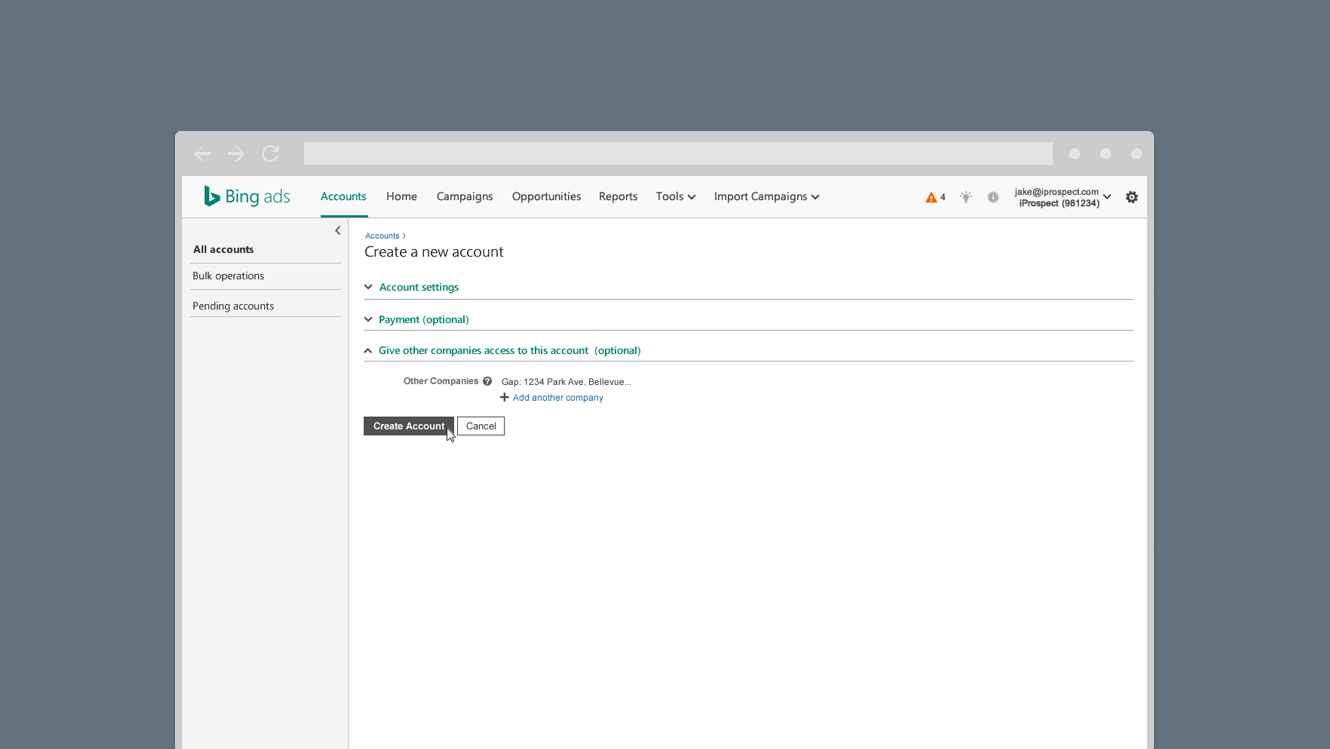Design with Data
To start with, I identified two major user profiles by triangulating data from contextual inquiry, diary study, & survey. I was specifically interested in the tasks they perform because of direct implication to design. Using cluster analysis I discovered two meaningful groups that have very unique priorities, expertise, preferences and backgrounds. So we know who, what, when, why, and where they’re doing with different Bing Ads platforms.
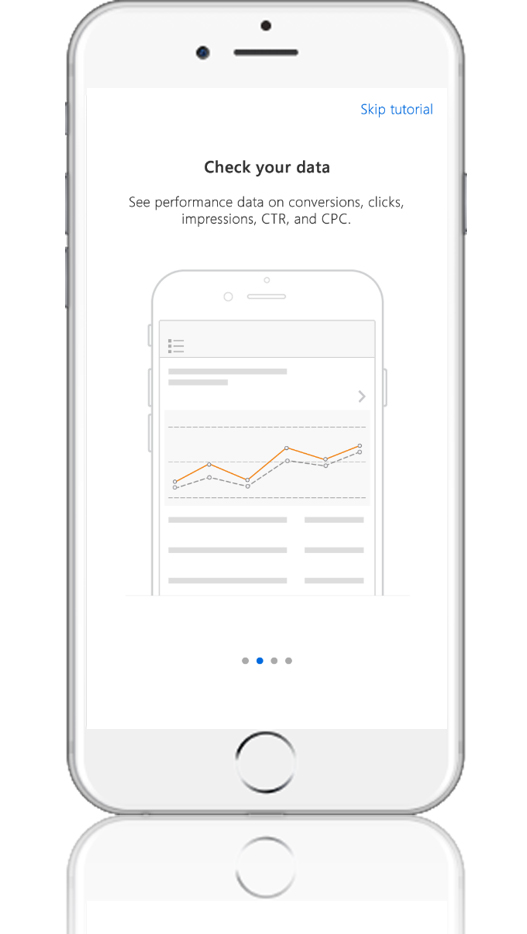
Design for the Audience
Because of these insights, I was able to effectively design on-boarding experiences for different platforms, iOS, web, and white-glove, tailored to their specific audiences. On iOS, a tutorial designed with a simple layout and plain talk let novice users know that they can complete small & urgent mobile tasks.
While on the web, users go through a step-by-step wizard to set up a few essentials for creating an account, and land on the page to create or import campaign. White-glove advertisers have a dedicated tool to bulk transition their accounts to Bing Ads, including the ones from different countries and with different payment methods.
Cater to the Needs
It’s no surprise that when testing the prototypes with potential users, platforms with a narrow focus (mobile, white-glove) easily please their audience with targeted content and workflow. Doing so contributed to the success of Bing Ads iOS app and the white-glove service.
It is more challenging to design for a generic audience on the web. Asking some of the role questions up front, e.g. “are you an agency”, allowed us to provide personalized experience. Knowing what the majority of the users need, helped us make tough design choices.


